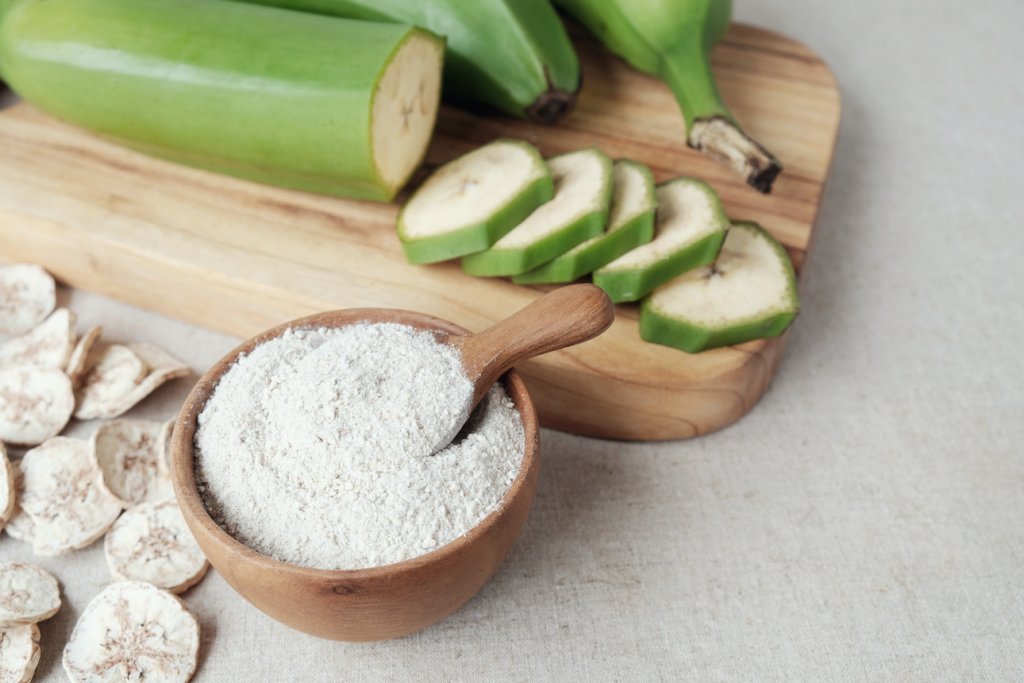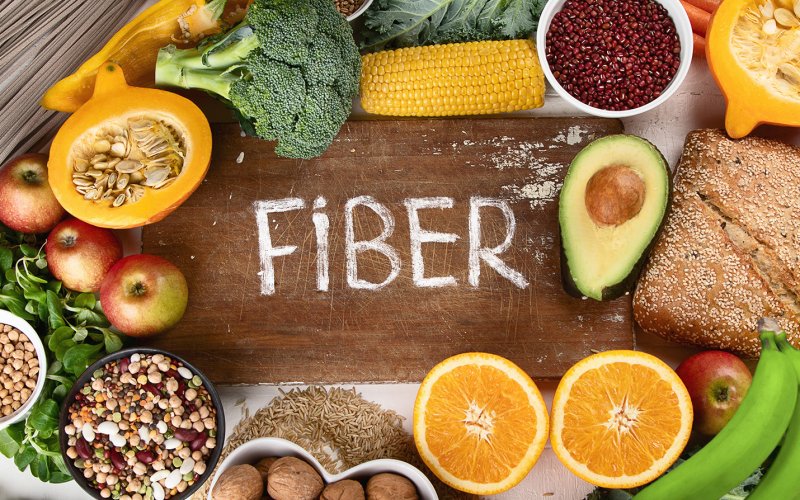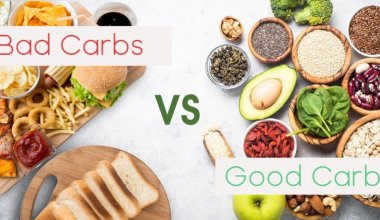In this article, we explain how to build up tolerance to fiber and resistant starch the right way:
- What exactly is ‘fiber’ and why is it important for our health?
- What’s the “fiber gap” and how much fiber should we be getting in our daily diet?
- What are the typical side effects of different types of fiber like resistant starch?
- Is gas or bloating unusual and does it mean that something’s wrong?
- 3 practical rules to follow to get more prebiotic fiber without issues
You probably know about the importance of fiber. Perhaps you’ve heard of the “fiber gap” and how western diets include nowhere near the recommended amount of daily dietary fiber.
Sounds simple, right? Eat more fiber and reap the benefits.
Not so fast. There’s more to dietary fiber than just “eat more,” and not all fiber is created equal.
In fact, one of the most important types of dietary fiber is called resistant starch — a powerful prebiotic fiber that feeds the good bacteria in your gut and improves blood sugar, gut health and more. Traditionally, humans ate as much as 50g of resistant starch per day, whereas we hardly get any resistant starch at all in the standard American diet.
So you might be wondering, how much fiber is ideal? What type of dietary fiber is best for me? And how can I add more fiber into my diet without running to the bathroom all day?
 We sat down with Muniq‘s resident PhD and Nutrition Scientist, Dr. Ren-Hau Lai, to explain how prebiotic fibers like resistant starch can have such a significant impact on your health.
We sat down with Muniq‘s resident PhD and Nutrition Scientist, Dr. Ren-Hau Lai, to explain how prebiotic fibers like resistant starch can have such a significant impact on your health.
He also provides tips for getting more of this beneficial prebiotic fiber into your diet while minimizing side effects. Plus Ren explains why it’s especially important for diabetics & prediabetics to help get blood sugar under control. Ren has a knack for making science simple and straightforward, so let’s go!
Can you tell us a little about your job and experience, and what you do for Muniq?
Hi, my name is Ren and I am the Head of Research and Product Development at Muniq. I earned my Ph.D. from the University of Illinois, focusing on nutritional sciences and toxicology. I’ve been working for food and supplement companies for more than a decade. My expertise is formulation, nutrition research, regulation, and product development.
First off, let’s talk broadly about fiber. What exactly is ‘fiber’ and why is it important for our health?
That is a very good question. Fiber is a type of carbohydrate from plant cells that cannot be “digested” in the traditional sense. Fiber provides a range of health benefits. Most fibers support better digestion and bowel movements, while other fibers help create a more balanced gut by strengthening the beneficial bacteria in your gut. Plenty of clinical studies also suggest that dietary fiber has beneficial effects on metabolic issues, like obesity and diabetes.
So most people think of fiber as different foods (like beans, fruits, vegetables and/or grains) that keep you ‘regular’, but fiber is more complex than that, right? What are the different types of fiber and how do they affect the body differently?
Great question. As mentioned before, natural dietary fibers are all from plant cells. However, not all fiber is created equally. Most fibers can be categorized based on:
- how easily they dissolve in liquids (called solubility)
- how thick they are (called viscosity)
- And whether they feed the beneficial bacteria in the gut (called fermentability)
And of course, different fibers provide different health benefits. For example, soluble fiber such as oat beta-glucan and pectin can dissolve in water easily and can help lower “bad” cholesterol (LDL) and total cholesterol. On the other hand, insoluble fiber acts as a bulking substance that helps prevent constipation and likely helps lower risk of diabetes. And of course, resistant starch is a super powerful prebiotic fiber that has a bunch of clinically proven benefits, specifically for blood sugar control.
We’ve heard a lot about the “fiber gap.” What does that mean and how much fiber should we be getting in our daily diet?
Based on the most updated guidelines from the FDA, the recommended daily intake of dietary fiber is at least 28g per day. However, according to a recent survey, only 5% of people in the United States meet the daily fiber intake recommendation.
In fact, most people only get less than half of the daily recommendation. The fiber gap is huge and it’s actually a serious public health issue because lots of medical conditions like obesity, diabetes, and even colon cancer are highly associated with low dietary fiber intake.
We hear more and more these days about prebiotics. Can you tell us exactly what prebiotic fiber is and what it does in the body?
Prebiotics (not to be confused with probiotics) are a fermentable fiber that feed the beneficial bacteria that reside in our gut, and are responsible for keeping us healthy (there are a couple very powerful types of prebiotic fiber — including resistant starch —that I’ll get into in a moment).
These beneficial bacteria utilize prebiotics as their main source of energy, and when they consume prebiotic fiber (a process called fermentation) these bacteria also produce byproducts called short-chain fatty acids (SCFAs). SCFAs are incredibly powerful and important, and have been shown through research to be the main way that your gut impacts your overall health.
One important thing we need to understand about short-chain fatty acids is that they do more than just protect us from disease. They also help to boost our metabolism and overall gut health so we can more easily maintain a healthy weight and balanced blood sugar.

There are also several different kinds of prebiotic fiber, but one that I believe is most important and powerful is resistant starch. Resistant starch is a well-studied prebiotic fiber that has been researched for more than 20 years. Resistant starch can be found in unripened green bananas, cooked and cooled white rice and potatoes, and legumes, among other natural plant foods. Another well-studied prebiotic fiber is beta-glucan from oat or barley.
Now, most people are familiar with the fact that fiber is good for regularity and digestive health…but can also make you run to the bathroom! What are the typical side effects of adding different types of fiber to your diet? Especially prebiotic fiber like resistant starch?
 This is an excellent question. In fact I would not call these “side effects” and instead I would call them the signs of a “transition” phase as your gut health begins to improve.
This is an excellent question. In fact I would not call these “side effects” and instead I would call them the signs of a “transition” phase as your gut health begins to improve.
The major signs of this transition phase are gas, flatulence, bloating, and maybe more frequent bowel movements. For most people, these signs disappear in a short time period from a couple of days to one or two weeks. So this is more like a transition phase, and to me, “No Pain, No Gain,” is a good way to describe this transition.
Should you expect the same transition issues from all types of prebiotic fiber?
Actually, no! Because of the chemical structure and fermentation mechanism, some prebiotic fiber can be fermented too quickly, which leads to extra discomfort.
For example, the maximum tolerance level of inulin, one of the most common prebiotic fibers which comes from chicory root, is only 10g per day per multiple studies. This means that significant GI discomfort typically happens if consumption approaches 10g per day.
On the other hand, the tolerance level for resistant starch is up to 45g per day. So compared to inulin, the tolerance level for resistant starch is much better.
Let’s geek out for a second. Can you explain the scientific reasoning for the gas or bloating side effects most people experience from prebiotic fiber? Is gas or bloating unusual and does it mean that something’s wrong?
This process is actually quite complicated! As I mentioned earlier, prebiotic dietary fiber is a major food source for the beneficial bacteria inside your gut. In addition to producing those beneficial short-chain fatty acids that I described earlier, the other byproducts produced during this fermentation process are gases. These gases include hydrogen, carbon dioxide, and methane. They are definitely the major causes of all bloating and flatulence issues.
However, in a normal and healthy gut, these issues typically do not last long since other groups of bacteria can use these gases as energy sources. Once the other groups of bacteria start to consume these gases, the flatulence issue is gone. We call this “cross-feeding” among different bacteria in your gut microbiome. So experiencing a little bit of gas or bloating is perfectly normal and usually means that the prebiotic fiber is working!
OK, so you said we ALL need to get a LOT more fiber in our diet to close the fiber gap, preferably more prebiotic fiber like resistant starch. So what are some practical ways that you can get more prebiotic fiber into a daily routine while minimizing the tolerance issues?

Based on how prebiotics work inside our body, I suggest three practical rules that could be helpful to get you through the transition phase.
Rule #1 — Choose the correct prebiotic fiber for you
As mentioned above, not all prebiotic fibers are created equally, especially in terms of how significantly they impact your health and the expected side effects. For example, for people with sensitive GI systems, resistant starch and oat beta-glucan are the better choices to consume daily since they have a lower chance of GI discomforts.
Rule #2 — Start slow and increase usage over time
The most common cause of excessive gas or bloating when starting a new high-fiber diet is simply adding too much too quickly. So too much dietary fiber at once definitely overwhelms the gut bacteria and causes all the gas and flatulence issues, especially for those who haven’t been consuming fiber regularly. So starting slow and small is important to get your gut primed. (This is why we recommend starting with a half serving of Muniq shakes when just getting started.)
As you slowly increase the amount of fiber in your diet, your beneficial gut bacteria population will start to grow. But it doesn’t happen overnight. It can take anywhere from a few days to a couple of weeks for your gut to adjust, depending on how drastically you’ve upped the amount of fiber that you’re eating.
Rule #3 — Avoid or reduce other gas-inducing foods
It’s important to avoid or reduce your intake of other foods that may introduce gas while you’re increasing your total fiber intake. Foods like artichokes, broccoli, peas, yams, beans, beer, soda, and gum can all cause gas too. Some of them are good stuff, but just make sure you introduce them together gradually, not suddenly.
But what if your tummy is extra sensitive and you still have gastrointestinal issues? Do you need to give up, or are there additional strategies that you can try?
Please do not give up on your dietary fiber intake even if you have an extra sensitive gut! In fact, individuals with sensitive gut issues are the ones who really need good dietary fiber and an optimal balance of gut bacteria the most! Instead of giving it up completely, you can just begin with a super low level of dietary fiber. For example, 5g per day is a good starting point. If you still feel discomfort, please lower it again until you feel OK.
Then, once your body gets used to the fiber intake, you could gradually bring the intake level up, increasing by 5 grams every week or every other week. Also remember that drinking plenty of water can be another good way to reduce discomfort caused by ramping up your fiber intake.
And believe it or not, another useful tip is exercise! Regular exercise, especially aerobic exercise, can also help alleviate bloating and discomfort.
Thanks for educating us on fiber and the science behind tolerance issues. Final question: can you tell us how you went about formulating Muniq shakes and why you choose the specific prebiotic fibers in your blend?

From the very beginning of the formulation process, Marc (Muniq Founder & CEO) and I were eager to find a way to provide consumers with better solutions. To us, the formula needed to be effective and delicious. We did not want to make any compromise of efficacy while making it taste good. So it took us quite a while to make sure that we chose the right ingredients, especially the prebiotic fiber blend featuring resistant starch.
We were absolutely blown away by the research on the powerful benefits of resistant starch and its significant impact on improving gut health and blood sugar control. And as a scientist, I don’t get blown away very easily! The unique and [patent-pending] prebiotic fiber blend used in Muniq is supported by 300+ scientific studies and I’m proud to say that our shakes also taste REALLY good!








2 comments
I’m still a bit confused. instead of two scoops I’m only having 1 scoop and experience lots of diarrhea over several hours and after several hours of having the Muniq. i am only having this amount every other day because of these issues. I just don’t think this is normal but don’t want to give up. Is this normal or do some people have a very hard time getting used to the shakes. I just cant imagine 2 scoops. How big is 5 grams? 1 scoop? 1/2 scoop? I really don’t want to give it up but I also want a life and staying close to home because of these issues is not my cup of tea. it is a bit embarrassing don’t you know. How much water should i be drinking.?
Hi Muffy!
Thank you for reaching out and for sharing your experience with us! Believe it or not, with Muniq these traits you are currently experiencing are expected and good signs that the prebiotic fibers are doing their job in feeding the good gut bacteria in your gut!
Keep at with 1 scoop or a bit less with 10-12oz of water. The trick is to stay consistent and not give up! If you continue to experience tolerance issues, you can further reduce to a half scoop to ease the transition 🙂
Everyone’s unique body adapts differently, as some folks get over this initial phase in just a few days, and for others it takes a bit longer. But something that is very important to understand is that your body will adjust and what you’re currently experiencing will subside!
Keep at it and don’t give up! You got this, Muffy, and we’re going to be here every step of the way to help you!
Thanks!
Muniq Customer Experience